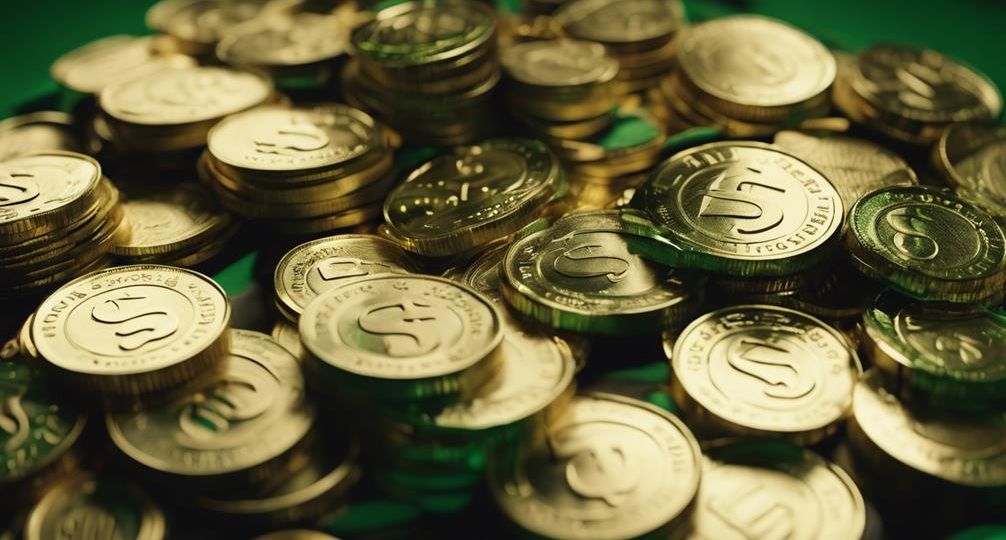
What do 80 million streams pay on Spotify?
If your music has been streamed 80 million times on Spotify, you’re looking at an estimated payout of $400,000. This figure is based on Spotify’s average payout rate, which hovers around $0.005 per stream. However, several factors come into play in determining actual earnings. These include your listener’s country, your popularity, and whether streams come from premium or free accounts. Also, the role of record labels in negotiating payouts can’t be underestimated. If you’re interested, there’s a lot more to know about how streams translate into money in your pocket.
Key Takeaways
- Spotify’s payout for 80 million streams varies due to factors like subscription type and listener location.
- Premium user streams contribute more to artist earnings than free user streams.
- An artist’s payout is determined by multiplying their pro-rata share of streams by Spotify’s total revenue.
- Record labels often negotiate the artist’s cut of Spotify earnings, which can significantly impact payouts.
- Direct earnings from Spotify may be supplemented by indirect revenue sources, such as merchandise and concert sales.
Understanding Spotify’s Payment Structure
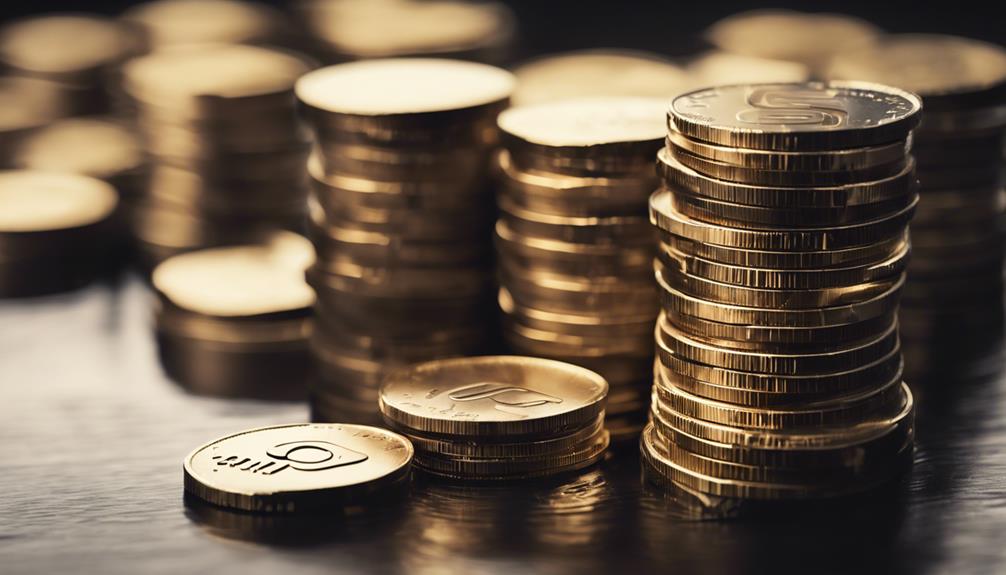
To fully grasp how much 80 million streams would earn on Spotify, it’s important to first understand the platform’s intricate payment structure. Spotify’s subscription tiers form a vital part of this structure. You’ve got two main tiers: the free tier, which is ad-supported, and the premium tier, where users pay a monthly fee for an ad-free experience.
Now, you might wonder about the role of these tiers in determining payments. Here’s how it works: Spotify pays artists differently based on the listener’s subscription tier. If you’re a premium user, your streams contribute more to the artist’s earnings than if you’re on the free tier.
Personalized playlists also have a significant impact on Spotify’s payment structure. These playlists, tailored to each user’s musical taste, drive listener engagement and boost stream counts. The more times a track is streamed, the more the artist earns. However, it’s not as straightforward as it seems. Other factors like the country of the listener and the artist’s popularity also play a part in the final payout.
In essence, understanding Spotify’s payment model is key to appreciating the potential earnings from 80 million streams. It’s a complex interplay of subscription tiers, personalized playlists, and other variables.
Spotify’s Royalty Distribution System
Often, you’ll find that Spotify’s royalty distribution system is a complex arrangement based on a pro-rata model. This model, while efficient, has been a root cause for numerous Spotify controversies, primarily around the fairness of payment distribution.
Monthly Active Users: Spotify calculates the total revenue generated from all its monthly active users. This includes subscription fees and advertising revenue.
Pro-rata Share: Spotify then determines each artist’s pro-rata share by dividing the number of streams of each artist’s songs by the total number of song streams for that month.
Artist Payout: The pro-rata share is then multiplied by the total revenue to determine the artist’s payout.
User Experience: This model has implications on user experience too. While it promotes a broad array of music, it can be argued that it doesn’t adequately reward artists who’ve a small but dedicated fan base.
You must remember that this is a simplified overview of a complex system. It’s an innovative approach to royalty distribution, but it isn’t without its criticisms. As with any innovative system, it’s continually evolving to better meet the needs of artists and users alike.
The Role of Record Labels

Unsurprisingly, record labels play a significant role in determining how much an artist earns from Spotify streams. They’re not just the gatekeepers of music distribution, they’re integral in contract negotiations that directly influence an artist’s payout.
Consider this: the lion’s share of Spotify’s payout doesn’t go directly to the artist, but to the holder of the music’s rights – usually the record label. It’s in these contract negotiations that labels determine the artist’s cut. The more bargaining power an artist has, the higher their percentage could be. This is where the game becomes uneven, especially for emerging talents.
Label scandals have shed light on how some labels take advantage of artists, taking a disproportionate cut. Such controversies underscore the need for transparency and fair play in the industry.
Record labels need to evolve, adopting innovative practices that benefit both themselves and their artists.
Factors Influencing Payouts
While the role of record labels is significant in shaping an artist’s revenue from Spotify, there are several other factors that come into play as well. Streaming calculations, for instance, are a major part of the equation.
- Thorough: The number of streams an artist gets compared to the total streams on the platform determines their market share, which affects their payout.
- In-depth: Premium users’ streams pay more than those of free users. The blend of your listeners’ subscription types can influence your earnings.
- Detailed: Payouts are geographically influenced. Streams from countries with higher Spotify subscription rates pay more.
- Extensive: Issues such as alleged undervaluing of songs and unfair distribution of revenue can impact the public perception, user base, and consequently, the payouts.
These factors intertwine in complex ways, creating a dynamic and ever-changing payout landscape. Understanding these variables provides you with a more thorough view of how Spotify’s compensation model works.
It’s not just about the number of streams; it’s about how these factors interact within the streaming calculations to determine your final payout.
Breaking Down the Numbers
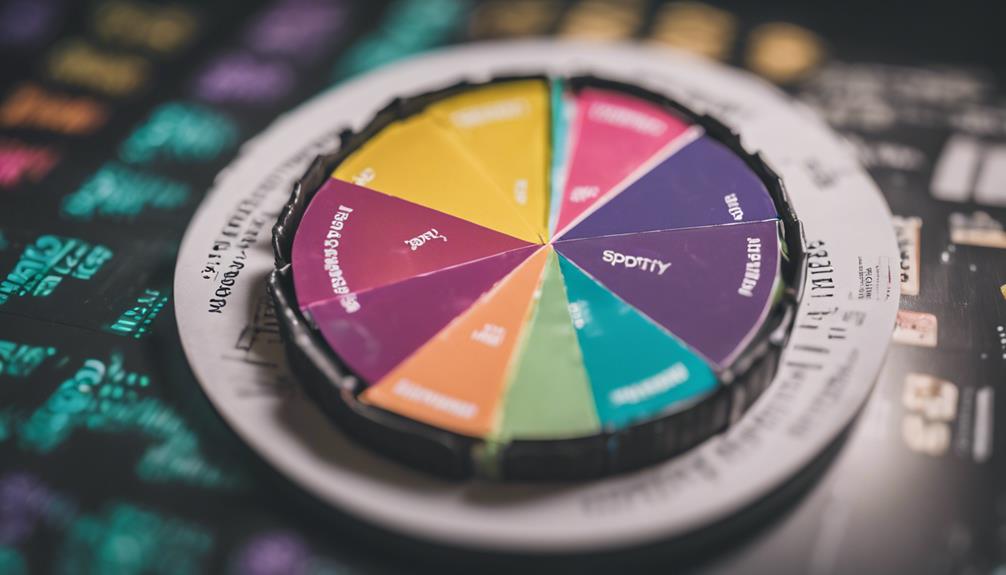
Let’s uncover the inner workings and explore the hard numbers to decipher what 80 million streams truly amount to on Spotify. It’s a complex equation, shaped by variables like stream exclusivity and the impact of piracy.
Stream exclusivity refers to the idea of limiting a song or album’s availability to a single streaming platform, initially at least. This can generate significant buzz, driving streams and potentially boosting earnings. However, it’s not a one-size-fits-all solution. It depends on the artist’s fan base, their bargaining power, and the platform’s individual payout rates.
Next, let’s consider the piracy impact. Although streaming services like Spotify have curbed music piracy to a significant degree, it remains a factor. Remember, every pirated track represents a potential lost stream. The more an artist’s work is pirated, the fewer legitimate streams they’ll gain, directly affecting their potential earnings from platforms like Spotify.
Artist Revenue From 80 Million Streams
So, you might be wondering exactly how much an artist can earn from 80 million streams on Spotify. It’s important to understand that the revenue generated varies based on diverse factors.
- Rights Ownership: Your earnings are heavily impacted by whether you’re an independent artist or signed with a record label. Labels typically take a large portion of the revenue.
- Listeners’ Subscription Type: Free users generate less revenue than premium subscribers. A stream from a premium account pays more.
- Stream Manipulation: This refers to artificially increasing streams to improve chart positions. Spotify has strict rules against this, and any detected activity could result in zero payment.
- Concert Promotions: Streaming can lead to indirect revenue. Increased exposure on Spotify often boosts concert ticket sales and merchandising.
Keep in mind that the reported average pay per stream is about $0.0032. By this metric, 80 million streams would roughly amount to $256,000. However, after deducting label cuts, distribution costs, taxes, and other expenses, the net income is usually much less. It’s a complex system, but understanding these nuances can help navigate the streaming landscape successfully.
Impacts on Independent Artists
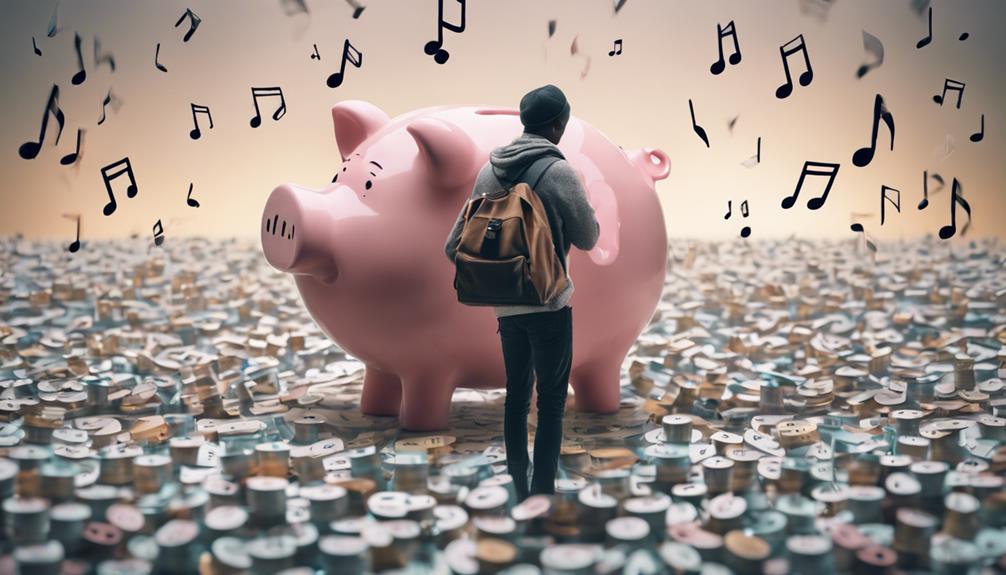
In the world of Spotify streaming, independent artists face unique challenges and opportunities that greatly impact their revenue. With the platform’s model, you’re dealing with an intriguing mix of artist branding and fan engagement. Your brand, as an indie artist, is your calling card. It’s more than just your music; it’s your image, your story, your unique selling proposition.
If you can effectively leverage Spotify’s features, such as playlists and algorithmic recommendations, you can optimize your brand exposure.
On the flip side, fan engagement is integral to your success. You’re not just looking for passive listeners; you need engaged fans who’ll share your music, add it to their personal playlists, and interact with your content. Spotify doesn’t just pay based on streams, but also factors in listener engagement when determining payouts. Hence, the more engaged your fans are, the better your potential earnings.
However, it’s not all roses. The sheer volume of music on Spotify can make it difficult to stand out, and the payout per stream may not meet your financial needs. But, with strategic branding and fan engagement, you can maximize your potential on this platform.
Comparisons With Other Streaming Platforms
When comparing Spotify with other music streaming giants like Apple Music, Tidal, and Amazon Music, it’s important to understand the stark differences in payout rates and audience reach each platform offers.
Platform diversity is quite significant in the music streaming industry, each with its unique business model, payment structure, and user base.
- Apple Music: Despite a smaller user base than Spotify, Apple pays a higher royalty rate, resulting in a narrower revenue disparity for artists.
- Tidal: Owned by artists themselves, Tidal is known for its high fidelity audio and higher payouts, though its reach is less broad.
- Amazon Music: With a massive ecosystem of products, Amazon offers bundled services, impacting its payout rates. Yet, its vast user base can amplify an artist’s reach.
- Spotify: Spotify leads in subscriber count, but its payout rate is controversially lower.
As you navigate this diverse landscape, remember that each platform’s payout isn’t just about raw numbers. It’s a complex blend of audience reach, artist exposure, and user engagement.
Be analytical in understanding these differences—it’s not just about chasing the highest payout, but also about finding your audience and maximizing your impact.
The Future of Music Streaming Payments
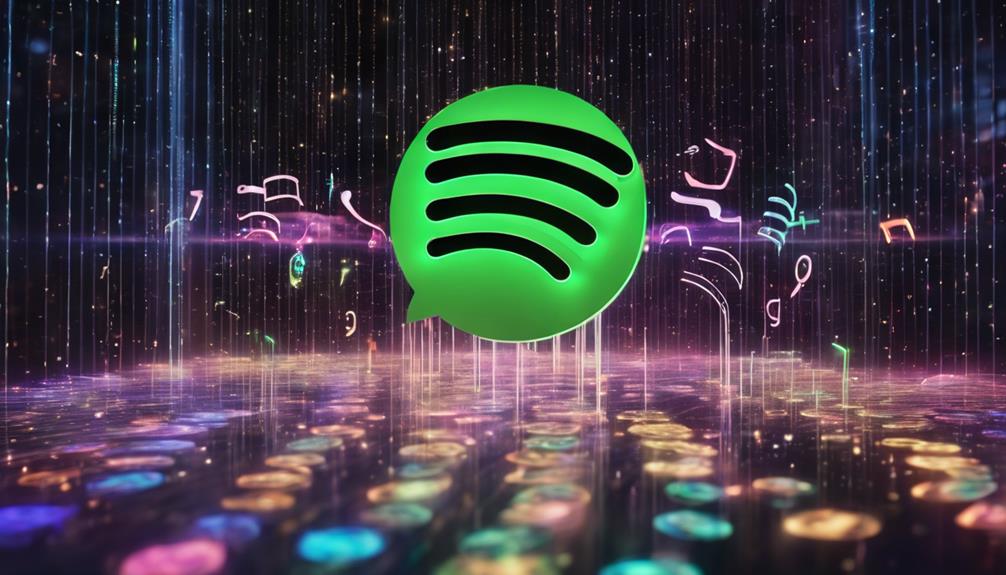
When considering the dynamics of current music streaming payments, it’s vital to look ahead and anticipate how these platforms might evolve their payment structures in the future. The streaming models evolution will likely be driven by a combination of technology advancements, shifts in consumer payment perspectives, and changes in the music industry’s economic landscape.
As you navigate this shifting terrain, expect to see a more personalized pricing model that takes into account your listening habits and preferences. This could mean paying more for high-quality audio, exclusive content, or ad-free experiences, all tailored to your taste.
Innovative payment structures may also be implemented to better reward artists. One such model could be a direct-to-artist payment system, where your subscription fee is divided among the artists you listen to most. This would create a deeper connection between you and your favorite artists, fostering a sense of direct support.
The future also holds the potential for blockchain technology to bring transparency to royalty distribution. Smart contracts could guarantee artists are paid promptly and fairly, addressing longstanding industry issues.
In this future landscape, you, the consumer, will play a pivotal role. Your preferences, listening habits, and willingness to pay for value will shape the direction of music streaming payments.
Making a Living as a Spotify Artist
As you consider the future of music streaming payments, it’s equally important to understand how artists currently make a living on platforms like Spotify.
The income of an artist on Spotify isn’t solely determined by the number of streams their music garners. There are several other avenues for revenue generation, and here they are:
- Spotify Promotions: By investing in Spotify promotions, you can boost your visibility on the platform, leading to an increase in streams and, consequently, earnings.
- Playlist Features: Landing a spot on Spotify’s curated playlists can greatly boost your listenership, leading to higher royalty payments.
- Listener Demographics: Your earnings also depend on where your listeners are based. Royalty rates differ per country, so having a diverse listener demographic can be advantageous.
- Merchandise and Concert Sales: Spotify also allows artists to promote their merchandise and upcoming concerts. This can be a substantial source of income.
Essentially, making a living as a Spotify artist is a complex interplay of factors. It’s not just about producing quality music; it’s about understanding the platform, your audience, and utilizing strategic promotions to optimize your earnings.

